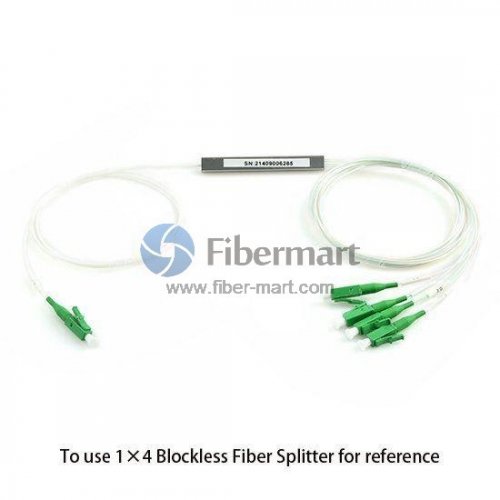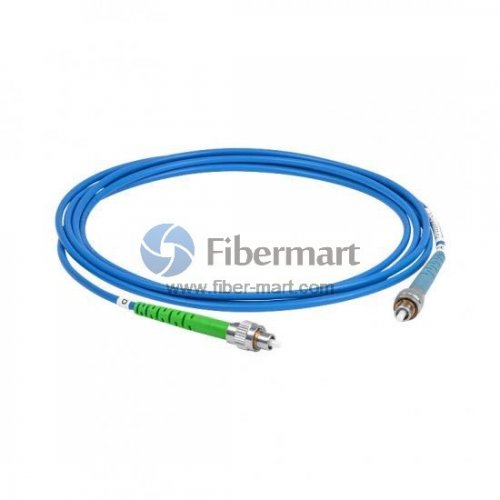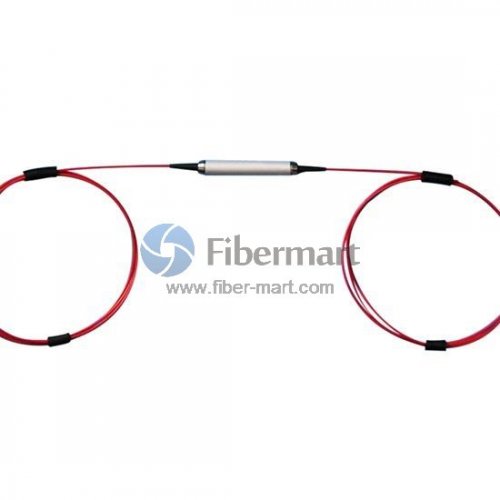In the high-stakes world of optical networking, where nanoseconds can make or break performance, Polarization Maintaining (PM) cables emerge as unsung heroes. These specialized fibers ensure that the orientation of light’s electric field remains steadfast, enabling ultra-precise, low-noise, and high-fidelity signal transmission. Let’s delve into why PM cables are not just beneficial but essential for precision-controlled optical network deployments.
Understanding Polarization in Optical Fibers
Light, at its core, is an electromagnetic wave characterized by its polarization—the direction in which its electric field oscillates. In standard single-mode fibers, this polarization can drift due to environmental factors like temperature fluctuations, mechanical stress, or fiber imperfections. Such drift leads to:
- Polarization Mode Dispersion (PMD): Different polarization modes travel at varying speeds, causing signal distortion.
- Polarization-Dependent Loss (PDL): Components may attenuate signals differently based on their polarization state.
- Crosstalk: Unintended coupling between channels, degrading signal integrity.
In high-precision applications, such as interferometry or quantum key distribution, maintaining a stable polarization is paramount. Enter PM fibers.
The Mechanics of Polarization Maintaining Fibers
PM fibers are engineered to preserve the polarization state of light over extended distances. They achieve this through:
1. Birefringence
PM fibers exhibit birefringence, meaning they have two distinct refractive indices for orthogonal polarization modes. This property ensures that light polarized along one axis remains confined to that axis, minimizing coupling between modes.
2. Stress-Engineered Structures
Designs like the PANDA and Bow-Tie fibers incorporate stress rods into the cladding, inducing controlled birefringence. These structures create a significant difference in propagation constants between the two polarization axes, ensuring minimal cross-coupling.

3. Precise Alignment
For optimal performance, the input light’s polarization must align with the fiber’s principal axis. Misalignment can lead to mode coupling and reduced polarization extinction ratios (PER). High-quality PM cables often feature connectors with keying mechanisms to maintain this alignment.
Applications Demanding PM Cables
PM cables are indispensable in scenarios where polarization fidelity is non-negotiable:
1. Quantum Communications
Quantum systems rely on specific polarization states to encode information. Any drift can compromise data integrity and security.
2. Fiber Optic Gyroscopes
Used in navigation systems, these gyroscopes detect rotation based on interference patterns, which require stable polarization to function accurately.
3. High-Power Fiber Lasers
Maintaining polarization ensures consistent beam quality and prevents feedback that could damage laser components.
4. Coherent Communication Systems
These systems use phase and amplitude modulation, both of which are sensitive to polarization changes. PM fibers ensure signal integrity over long distances.

Advantages of PM Cables in Optical Networks
The decision to deploy Polarization Maintaining (PM) cables isn’t just for show. These fibers offer real, measurable advantages when you’re dealing with bleeding-edge optical network setups. Whether you’re sending signals to the far ends of a data center or conducting sensitive optical experiments, the benefits of PM cables can be game-changing—especially when the smallest fluctuations can throw your whole system off balance.
1. Stable Polarization Means Stable Signals
At the heart of the matter, PM cables are all about locking in the polarization of light. Unlike standard single-mode fibers that let the polarization state wobble and wander with every vibration, bump, or gust of air, PM cables maintain the orientation like it’s on rails. This is a big deal in any optical system that relies on coherence or polarization-dependent technology.
In coherent optical communication systems, where both amplitude and phase of the lightwave are used to encode data, even a slight misalignment in polarization can introduce phase noise and lead to errors. PM fibers eliminate that variable, resulting in clean, stable signal transmission across long distances—even when environmental conditions are less than ideal.
2. Drastically Reduced Polarization Mode Dispersion (PMD)
PMD is like the silent killer of high-speed data. It’s a subtle form of signal distortion caused when different polarization components of a signal travel at different velocities, arriving out of sync. Over short distances, it’s whatever—but over longer links or at higher data rates, it can become a serious bottleneck.
Because PM fibers guide light along a fixed polarization axis, they pretty much nullify this issue. By reducing or entirely eliminating PMD, these cables allow systems to operate at higher data rates without the need for expensive compensation modules or complex DSP algorithms downstream.
3. Incredible Polarization Extinction Ratio (PER)
The Polarization Extinction Ratio, or PER, measures how well a fiber suppresses light in the orthogonal polarization axis. In layman’s terms? A higher PER means better polarization fidelity. PM cables often achieve PER values of 20 dB or more—meaning the unwanted polarization component is more than 100 times weaker than the main signal. That’s tight control.
This is crucial in applications like interferometry, quantum key distribution, and Raman spectroscopy, where stray polarization components can throw off measurements or reduce signal-to-noise ratios.

4. Consistency Across Harsh or Unpredictable Environments
Let’s face it—real-world deployments are messy. There’s vibration, heat, cold, bending, twisting, and plain ol’ human error. Most fiber can’t handle all that without some signal degradation. But PM cables? They’re built differently.
Their rugged construction and stress-aligned cores make them far more immune to mechanical perturbations. That means once you’ve aligned your polarization at the source, you can basically trust that it’ll stay intact at the destination—even if the cable is running through a warehouse, up a tower, or behind a panel that’s never been opened (or cleaned) in five years.
5. Essential for Polarization-Sensitive Devices
Modern photonics is packed with gear that’s ultra-sensitive to the polarization state of the incoming signal—optical modulators, isolators, circulators, and even optical switches. Feeding these devices with uncontrolled polarization can result in unpredictable performance, erratic outputs, or in worst cases, system failure.
PM cables act as the bodyguard for your polarization-dependent devices. By feeding them a consistent signal, they allow the devices to operate within their optimal specs, boosting not just performance but also longevity.

6. Low Noise, High Precision Transmission
This one’s huge. In metrology, sensing, and scientific experiments where nanometric shifts or photon-level changes matter, noise is the enemy. Standard fibers allow polarization fluctuations that manifest as phase noise or amplitude noise.
PM fibers cut through that by ensuring that the signal’s polarization is consistent, thereby reducing the variables in your system. For example, in fiber-based gyroscopes or LIDAR systems, even the tiniest polarization rotation could change the result. PM cables help keep measurements repeatable, accurate, and clean.
7. Better Performance in Multiplexed Systems
Modern networks often use multiplexing techniques—like polarization division multiplexing (PDM)—to boost bandwidth by transmitting multiple signals with different polarizations simultaneously. The key here is that those polarizations must remain orthogonal (i.e., 90° apart). If the fiber doesn’t maintain the polarization, your channels start to mix, and signal integrity takes a hit.
PM cables preserve that precious orthogonality, letting your system squeeze every bit of capacity out of the available bandwidth without worrying about cross-talk or channel degradation.

8. Enables Advanced Modulation Formats
Let’s talk modulation—QAM, QPSK, DP-QPSK, and the like. These techniques carry more bits per symbol, making them highly efficient for high-capacity systems. But they’re also finicky. They require stable polarization for both encoding and decoding.
With PM cables, you create an environment where these advanced formats can thrive. It’s like giving them a five-star hotel to operate in—clean, stable, and comfortable. This results in higher spectral efficiency, better throughput, and lower latency, especially in long-haul and metro networks.
Whether you’re running an experimental optical lab, building a secure quantum network, or just making sure your hyperscale data center stays ahead of the performance curve, PM cables offer a solid ROI in the form of stability, fidelity, and future-proofing.
These aren’t your average cables—they’re precision tools built for a new era of optical communication. And once you’ve worked with them, it’s hard to go back.
Challenges and Considerations
While PM fibers offer significant advantages, they come with considerations:
- Cost: PM fibers are generally more expensive than standard fibers due to their specialized manufacturing processes.
- Installation Complexity: Ensuring precise alignment during splicing and connectorization requires skilled technicians.
- Higher Attenuation: PM fibers may exhibit slightly higher losses compared to standard single-mode fibers.
Conclusion
In the realm of precision-controlled optical networks, where every detail matters, PM cables stand out as vital components. Their ability to maintain polarization integrity ensures that advanced systems—from quantum communications to high-speed data centers—operate at peak performance. As optical technologies continue to evolve, the role of PM fibers will only become more critical.
Elevate Your Optical Network with Fibermart
Looking to integrate Polarization Maintaining Fiber Cables into your infrastructure? Fibermart (Fiber-MART.COM) is your trusted global supplier and manufacturer, offering high-quality polarization maintaining cable, Polarization Maintaining Patch Cable, and polarization maintaining Fiber splitter solutions. With a commitment to innovation and excellence, Fibermart ensures your network achieves unparalleled performance and reliability.
